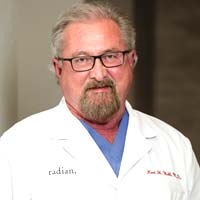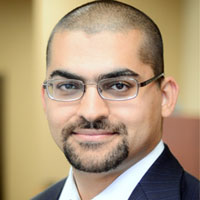ARTAS Robotic Hair Restoration System in Houston
A figure revealed by the International Society of Hair Restoration Surgery (ISHRS) fixes the number of men affected by male pattern baldness or androgenic alopecia in the United States at 35 million. Also half of the male population will be afflicted by baldness by the age of 50.
However they need not despair as hi-tech solutions which promise optimum hair restoration are available nowadays. One such method is the ARTAS robotic system.
ARTAS robotic system is a FDA cleared, physician controlled, computer-assisted technology that leverages the precision control enabled by robotics to assist hair restoration surgeons.
Dr. Rashid Rashid of Mosaic Clinic in Houston, Texas has installed the ARTAS System in his clinic. Restoration Robotics has supplied the system to the clinic.
It is the endeavor of Dr.Rashid to provide maximum care while undertaking hair restoration procedures for patients. He choose the ARTAS system as it leaves no linear scars and is also less time consuming considering the treatment time and recovery time.
Being minimally invasive and more precise, best results can be expected giving maximum client satisfaction.
During the hair transplantation procedure the surgeon removes healthy, functioning hair follicles from hairy areas of the scalp ( sides and back of head which are genetically immune to balding) and transplants them to the areas of the bald patches on the patient’s scalp.
The area of the scalp to be used for transplantation is first trimmed so it can be digitized by the ARTAS Robotic System. Digital maps of the area are made to analyze the position of each natural grouping of hair.
Under the doctor’s guidance, the system removes donor hair in a random fashion. This retains the look of the donor area which may otherwise become bare. The process is repeated until the desired amount of hair is acquired.
The grafts are then transplanted into the desired areas of the scalp, according to the physician’s design. These implanted grafts grow as permanent hair.
The patient can confidently expect new hair to grow within a year. The patient will gain a new appearance looking more like himself before he started losing hair. The restored hair not only retrieves his looks but also his lost confidence and self-esteem. Hair transplantation is a permanent solution to treating hair loss.
Restoration Robotics specializes in medical devices that help hair transplant surgeons with image guided technology and precision robotics to enhance the quality of hair restoration. The devices help both physicians and their patients.
Hairfear
Frequently asked questions about hair transplant procedures
How much does a hair transplant cost?
Hair transplants can vary in price based off of the area in the world that you are interested in getting a hair transplant as well as the size of the area where you may need a hair transplant. Experienced doctors in the United States will often charge some of the highest prices for a hair transplant worldwide and this is why so many travelers make the move to other parts the world like Turkey, India, Thailand, Mexico...etc for their hair transplants.
Will a hair transplant hurt?
Although hair transplants may look like a particularly
unpleasant or painful experience is actually very little discomfort involved
with the surgery itself. Hair transplants are always done under an anesthetic so there's absolutely zero pain during the treatment itself. Many people actually relate the process as being very similar to going to the dentist for filling or root canal. Mild pain can persist over the course of postop treatment but he generally just resumes for a few days.
Who can deliver the best surgery?
It's usually best to consider working with surgeons who have and IAHRS certification or international alliance of hair restoration surgeons recognition. IAHRS can often deliver recommendations for the best surgeons in each particular area.
Is this scarring noticeable?
Any type of hair transplant will require the use of incisions throughout the scalp. There can also sometimes be a small scar from the donor area towards the back of the scalp. Asking to look at photos of the surgeon's previous work will help you to see roughly how bad the scarring could be. In most cases an experienced professional can limit the look of scarring and noticeable marks from the surgery.
How long does it take for the hair to grow?
In most cases hair growth will start within eight months and you can start to see a full effect from the hair transplant after a full year. The initial signs of growth can usually start between 3 to 4 months after the surgery.
Are the results permanent?
The hair follicles that are transplanted are generally the ones which are genetically resistant against the symptoms of baldness. As long as you receive hair loss treatment later in your life after the symptoms of balding have started to subside, you can have a better chance at permanent results.
While everyone know you've had surgery?
If you want to limit the chance that people may find out about your surgery it's important to give at least three weeks of healing as the surgical area will be affected and red just after surgery. After around a month of healing it can look far less noticeable. You could consider wearing a hat while time passes or opting for some extra time off if possible.
How long should I rest after surgery?
It's recommended to rest for at least a few days after surgery so that your body can recover. Trenton to over exert yourself and limit sexual activity, running in the gym for around 10 days after surgery.
Is it possible to lose more hair as a result of surgery?
There is always a chance of shock loss which happens when the hair is weak and miniaturizing after the surgery. As long as the surgeon is choosing the correct hair follicles and performing the surgery well it's possible to minimize the chance of this happening however.
Will I need another hair transplant?
The need for another transplant really depends on the individual. With a solid foundation surgery and working to potentially bolster results with drug therapy, you can improve the stability of the hair that was transplanted as well as prevent further loss. Getting a hair transplant early
on in your 20s or early on in life could lead to needing long-term transplants as hair loss can be progressive.







